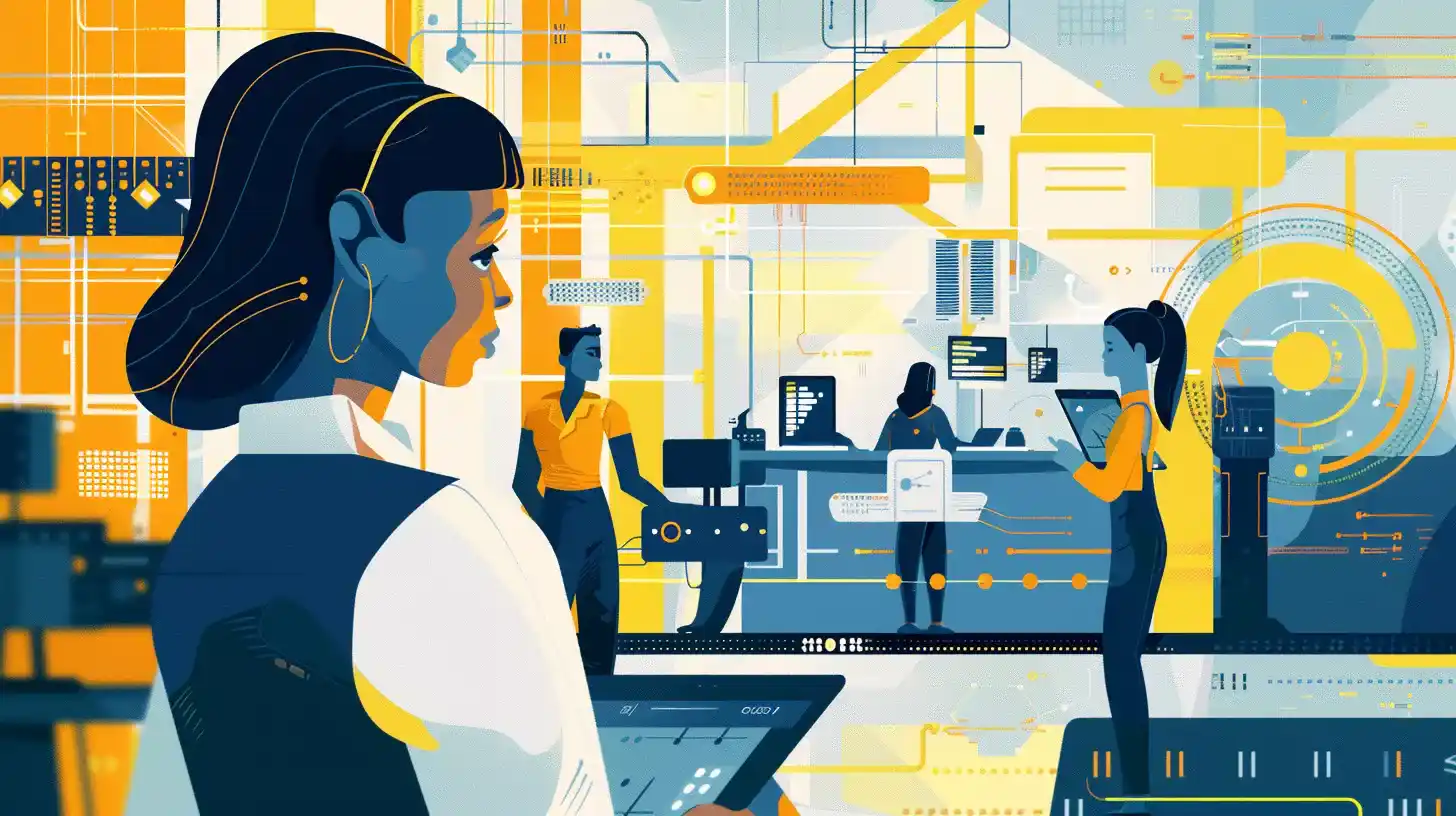Table of Contents
AI Revolution: The mobile revolution continues, but this time, the brains are in the phones themselves. With Apple, Samsung, and Google all integrating AI assistants like Apple Intelligence and Gemini AI, our devices are becoming ever more powerful. This surge in mobile smarts, however, creates a hidden challenge: the networks themselves.
Imagine millions of tiny AI engines churning through data, hungrily devouring bandwidth. That’s the future we’re hurtling towards, and telecom giants like O2, EE, Vodafone, and Three are scrambling to adapt.
“Network operators are wielding AI Revolution like a conductor’s baton,” says Ian Fogg, director of network innovation at CCS Insight. “They’re dynamically managing radio frequencies, optimizing service, and even putting cell towers on an energy-saving diet when demand dips.”
This global phenomenon is already yielding impressive results. In South Korea, AI-powered network monitoring allows Korea Telecom to pinpoint and fix faults within a minute, according to Alex Sinclair, CTO of the GSMA, the mobile operator’s global association. Meanwhile, AT&T in the US is harnessing the power of predictive AI algorithms, trained on mountains of historical network data, to anticipate and prevent outages before they happen.
Proactive Optimization with AI and 5G Standalone
But AI’s reach extends far beyond reactive measures. Vodafone, for instance, is leveraging “digital twins” – virtual replicas of real-world equipment – to constantly monitor network performance. This allows for proactive maintenance and optimization.

The data explosion isn’t lost on telecom companies either. It’s a key driver behind the relentless push for 5G Standalone networks. These next-generation networks boast dedicated infrastructure, a stark contrast to the patchwork upgrades of the existing 4G system. 5G Standalone promises lightning-fast speeds and vastly increased capacity, but some experts believe even this might not be enough.
Whispers of 6G, slated for rollout around 2028, are already circulating at industry events like the Mobile World Congress. The insatiable demands of the AI Revolution era might necessitate an entirely new network paradigm.
Beyond network infrastructure, AI Revolution is poised to transform customer service. The Global Telco AI Alliance, a consortium of industry giants like Deutsche Telekom and Softbank, is developing a specialized AI chatbot tailored to address the most common customer queries. This virtual assistant has the potential to free up human call center agents to tackle more complex issues.
Vodafone, too, is embracing the AI Revolution with its digital assistant Tobi, powered by Microsoft’s Azure OpenAI Service. Tobi interacts with millions of customers across 13 countries, and early results are promising. Vodafone reports a significant reduction in follow-up calls and a doubling in successful online customer journeys, thanks to Tobi’s ability to resolve basic inquiries.
While some fear AI-driven automation will lead to job losses in the telecom sector, others, like GSMA’s Sinclair, see it as an empowering tool, particularly for developing economies. “AI Revolution can become a specialist tool for emerging markets, helping them bridge the digital divide,” he argues.
The future of telecoms is undeniably intertwined with the AI Revolution. From network optimization and proactive maintenance to personalized customer service, AI is poised to revolutionize the industry. Whether it’s the race for 5G dominance or the whispers of 6G on the horizon, one thing is certain: the networks of tomorrow will need to be as intelligent as the devices they serve.
The Human Touch in the Age of AI Revolution

The rise of AI in telecoms paints a fascinating picture, but a crucial element remains the human factor. Here’s why human expertise will continue to be vital:
- Understanding Context: AI excels at crunching data, but human intuition is unmatched in grasping the nuances of customer situations. A frustrated call about a dropped call might mask deeper anxieties about data usage or billing issues. Human agents can navigate these complexities and build rapport.
- Ethical Considerations: AI algorithms are only as good as the data they’re trained on. Biases can creep in, leading to discriminatory customer service experiences. Human oversight ensures fairness and ethical treatment for all.
- Creativity and Problem-Solving: AI excels at following predefined rules, but unforeseen situations arise. A skilled customer service agent can think outside the box and devise creative solutions to unique problems, ensuring customer satisfaction.
The Future: A Symphony of Human and Machine
The future of telecoms won’t be a zero-sum game between humans and AI. It will be a collaborative dance. AI will empower human agents by automating tedious tasks, freeing them to focus on complex problem-solving and building genuine customer relationships.
Imagine a customer service agent armed with AI-powered insights – real-time network data, past customer interactions and even sentiment analysis of the current conversation. This agent can then tailor their approach, anticipate needs, and resolve issues with unprecedented speed and efficiency.
The ultimate goal is not to replace humans, but to augment them, creating a more efficient, empathetic, and personalized customer service experience. This symphony of human and machine intelligence will be the cornerstone of successful telecom operations in the age of AI.





